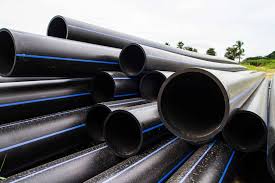Sep . 22, 2024 16:50 Back to list
pvc pipe types and sizes factory
Understanding PVC Pipe Types and Sizes A Comprehensive Guide
Polyvinyl chloride (PVC) pipes have become a staple in various industries due to their durability, versatility, and cost-effectiveness. They are widely used in plumbing, drainage, and irrigation applications. Understanding the different types and sizes of PVC pipes available can help you make informed decisions for your projects, whether you're a professional contractor or a DIY enthusiast.
Types of PVC Pipes
PVC pipes come in several types, each designed for specific applications. Here are some common types
1. PVC Schedule 40 This is the most common type of PVC pipe used in residential and commercial plumbing. It has a medium wall thickness, making it suitable for a wide range of applications, including water supply lines and irrigation systems. Schedule 40 pipes are lightweight and easy to handle, which is a significant advantage for installation.
2. PVC Schedule 80 Schedule 80 pipes have a thicker wall compared to Schedule 40, providing increased pressure resistance. They are ideal for more demanding applications, such as industrial plumbing and chemical transportation, where higher pressures or harsh chemicals may be involved.
3. PVC DWV (Drainage, Waste, and Vent) These pipes are designed specifically for drainage applications. They are used to transport waste water and sewage from homes and buildings to treatment facilities. DWV pipes are usually less expensive than Schedule pipes because they do not need to withstand high pressure.
pvc pipe types and sizes factory

4. PVC Conduit This type of pipe is used for electrical applications. PVC conduits protect electrical wiring from moisture, dirt, and physical damage. They come in both rigid and flexible forms and are essential for outdoor and underground electrical installations.
5. Cellular Core PVC This type features a hollow core that reduces the weight of the pipe while maintaining strength. Cellular core PVC pipes are often used in non-pressure applications, such as drainage and venting.
Sizes of PVC Pipes
PVC pipes are available in a range of diameters and lengths, which can vary based on the type. The most common nominal sizes for residential plumbing are ½ inch, ¾ inch, 1 inch, 1 ½ inch, and 2 inches. However, larger sizes (up to 24 inches or more) are available for industrial applications.
The size of the pipe you choose will depend on the specific requirements of your project. For example, a larger diameter pipe is necessary for high-flow applications, while smaller diameters are perfect for low-flow systems. The length of PVC pipes typically ranges from 10 to 20 feet, but custom lengths are also available from many manufacturers.
Conclusion
When selecting PVC pipes for your project, understanding the different types and sizes is crucial. Consider the specific requirements of your application, including pressure levels, chemical exposure, and flow rates. By choosing the right type and size of PVC pipe, you ensure the longevity and efficiency of your piping system. Whether you are working on a new construction project or upgrading an existing system, PVC pipes offer a reliable and economical solution. Always consult with manufacturers or professionals if you have questions about the best piping options for your needs.
-
High-Quality PVC Borehole Pipes Durable & Versatile Pipe Solutions
NewsJul.08,2025
-
High-Quality PVC Perforated Pipes for Efficient Drainage Leading Manufacturers & Factories
NewsJul.08,2025
-
High-Quality PVC Borehole Pipes Durable Pipe Solutions by Leading Manufacturer
NewsJul.08,2025
-
High-Quality PVC Borehole Pipes Reliable PVC Pipe Manufacturer Solutions
NewsJul.07,2025
-
High-Quality UPVC Drain Pipes Durable HDPE & Drain Pipe Solutions
NewsJul.07,2025
-
High-Quality Conduit Pipes & HDPE Conduit Fittings Manufacturer Reliable Factory Supply
NewsJul.06,2025

